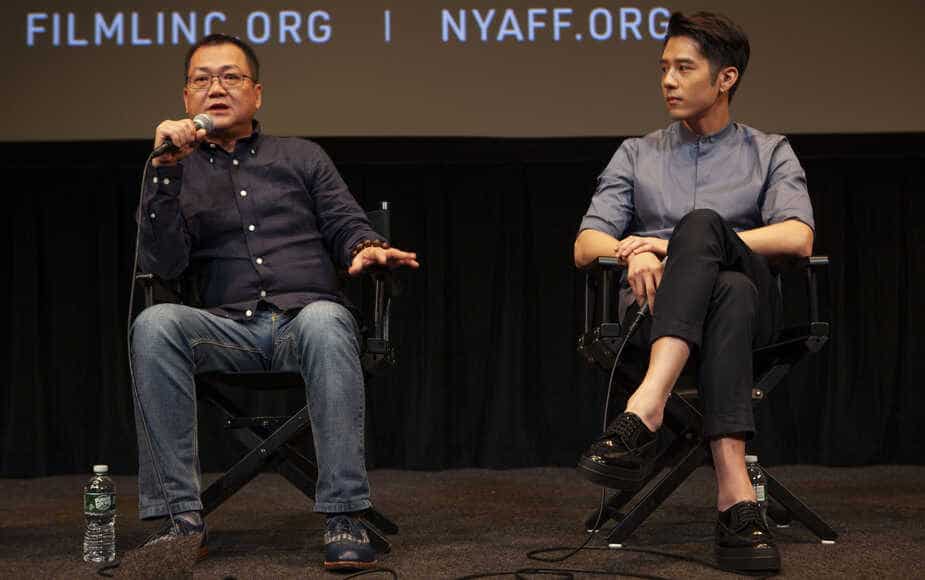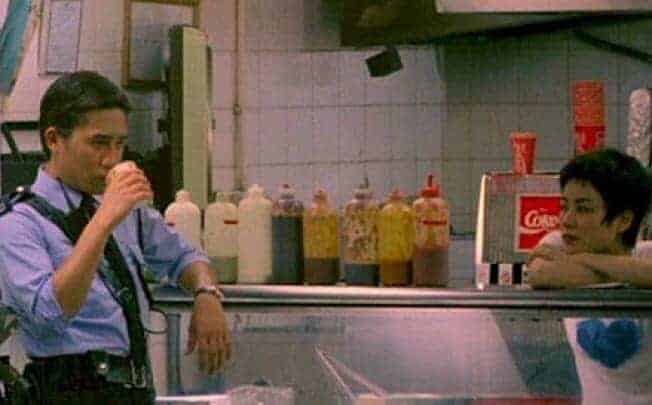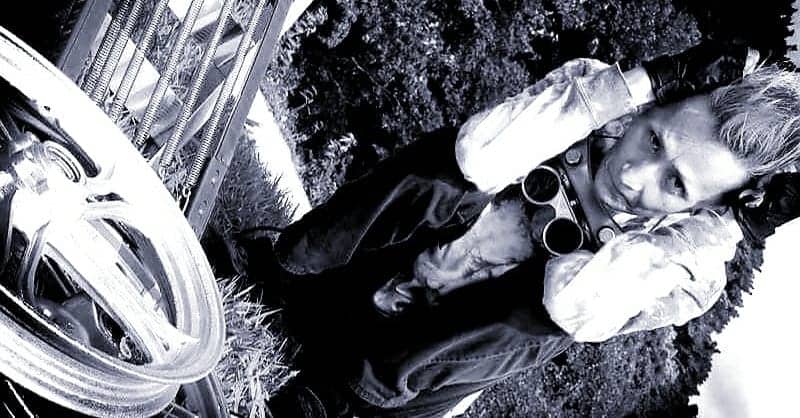The world premiere for Shuchi Talati's debut feature, “Girls will be Girls” was a blast at Sundance. Over the course of two hours, the audience booed and laughed, sniffled and sighed, as Talati's coming-of-age tale took its viewers on an emotional rollercoaster. The audience enjoyment translated to the awards, too: “Girls will be Girls” took home the Audience Award for World Cinema Dramatic Competition this year.
The popular appeal of Talati's movie is palpable. “Girls will be Girls” explores the adolescence of Mira – played by Preeti Panigrahi, whose performance was recognized at the festival with a Special Jury Award – against the backdrop of the Himalayas in the 1990s. Here, goody-two-shoes Mira is the head prefect of her school. Her situation becomes sticky, however, when she falls for the new boy, Sri (Kesav Binoy Kiron). Like the good student she is, she throws herself into a rigorous self-study of romance. She makes out with her arm in the shower; she looks up the birds and the bees in the library; she explores self-pleasure with a teddy bear at home. As if navigating her first relationship wasn't already enough drama, however, she realizes she has a rival competing for Sri's heart, and one that is just a little too close to home: her own mother, Anila (Kani Kusruti).
We caught Talati in Park City. Her bright aura was remarkable, especially the morning after a late-night dance party at the 1497 South Asia Lodge. Over a cup of coffee, we talked about her school days, Bollywood nostalgia, her women production trainee program in Mumbai, and what it takes to record intimacy for the big screen.
“Girls will be Girls” won the Audience Award for World cinema Dramatic Competition, and Preeti Panigrahi won the Special Jury Award at the 40th edition of Sundance Film Festival. World sales is managed by Luxbox.
This interview has been edited and redacted for clarity.
What inspired “Girls will be Girls”?
Shuchi Talati: I went to a school which had an ethos quite similar to the school that is in the film. So I would say I started writing from a place of rebellion.
Out of spite?
Yeah, totally out of spite. I went to a school where we were heavily policed. We were made to feel ashamed of our sexuality and our bodies. “Don't wear that shirt skirt is too tight; don't bend over a desk because then your skirt will ride up; don't talk to boys more than necessary” – just constant policing. And I remember that there was a boy who gave me a rose or a card at one point, and I was so shocked. And the first question from a teacher was, “Did you do something to provoke that?”
To you?
To me. Very victim-blame-y, slut-shame-y.
Was it religious at all?
It was more cultural, in the name of “traditional Indian values.” I was a good student. I was head prefect; but I also had a boyfriend. I wanted to write that sexual awakening story, and strip away this legacy of shame that we grew up with. I wanted to give this character agency to explore her sexuality and not punish her for it.
How did “Girls will be Girls” change over time?
The first draft of the film was entirely in the school. It was the protagonist Mira, her love interest Sri, and a love triangle with the teacher. And I was writing another short film, a mother-daughter story. Neither of those were working separately, so I put them together. And then I was like, “Oh, there's a film here now, because it's so much more complex.”
Did you feel a sense of catharsis when you worked on this film?
I felt a lot of catharsis and healing. I could allow Mira to be a wiser character than I was. She sees things clearly about her and her boyfriend and love interest, in a way that I may not have seen until my late 20s or 30s.
The other healing part was writing the mother. Most of my friends' moms had their kids when they were like in their early 20s. As I was writing this film in my 30s, I imagined what it must have felt like to be at my age and have a teenage daughter: totally sidelined, an asexual existence, playing second fiddle and not being a protagonist of your own life. That gave me a whole new appreciation for my own mom, and the aunts and teachers I knew growing up.
This is your first full feature. What was your process like, from beginning to end?
From concept to post-production was probably eight years. The first full draft was in 2018, and then I did many, many drafts after, and each one except for the very last ones are a page-one rewrite. Sometimes I will try not to read what I wrote earlier, and rewrite the scene not only because I am becoming a better writer as the years go on, but because I am a better writer of this film, since I know the world and the characters better. Then I went through a number of script labs.
How long was the shoot?
Principal photography was 36 days. I was adamant from the start, that I needed 40 days. It was a tight 36 days. (laughs)
That's still pretty long.
The edit was a really fine line. We had to make sure that the audience was never ahead of Mira. So in [the actors'] performances, we needed variations, of how charming or nice Sri was, or how flirtatious or motherly the mom was, so we could calibrate this in the edit. Sometimes, you don't know what the audience is picking up on until you do a test screening.
I also heard that you wanted to have an all-female crew.
We managed to hire women for most heads of departments, but some departments in India just don't have any women, like lighting and electric. One of our producers, Tanya Negi, said, “Why don't we do a training program?”
So my co-producers Richa Chadha and Tanya Negi led the charge, and applied for a grant from Berlinale Talents. Claire Chassagne managed to get us funding from the French Institute. The largest G&E (Grip and Electric) rental house in India, called Light N' Light, allowed us to use their space. So we trained nine women, and a few of them are still working in the film industry. We're now in our second year at UnderCurrent Film Lab and are about to open applications.
I remember in the Q&A, you mentioned that you made sure that the crew was all female during the teddy bear masturbation scene. Could you tell me more?
Whenever there was any intimacy, the men left. I think those were some of our favorite times. Everyone on the crew gave suggestions, like, “You could use the nose, or maybe angle [the teddy bear] like this.” It felt like people were speaking from lived experience. Some had very useful tips about how to make [masturbating with a teddy bear] seem realistic. (laughs)
Where do you think the future is headed for women in Indian film production?
The dream is ultimately to have a feminist set. And feminists can be anyone, no matter your gender expression. But in the interim, that feels far away, and it's nice for us to occasionally create these spaces that feel like female and safe.
Thinking about the past, I also noticed that you have a great eye for detail. I loved these these period decorations from the late 1990s in your film.
That was a time of huge change in India, with Western imports and the economy opening up in the early 1990s. We were wearing miniskirts and baggy jeans, weird prints and ugly T-shirts for the first time. Sneaking around and having a boyfriend was also really hard, pre-cellphones and pre-Internet-at-home. We had these big, elaborate signals using landlines. My friends and I have definitely been caught by our parents because there was just one phone. (laughs)

And the scene of Mira dancing to Bollywood music. It reminded me of Sita in “Fire” (Deepa Mehta, 1996), when she also changes into jeans and dances to Bollywood music, alone in her room.
We all grew up dancing to the Bollywood movies we saw on TV, mimicking the dance steps. There were a couple of TV channels that only played Bollywood songs for all 24 hours. And we would keep these on and dance to those. It was really nice to bring that to Mira – she's buttoned up at school, but on the inside, she's a young girl coming into her womanhood, her sexuality.
I was also curious about the film location. The synopsis says the film takes place in the Himalayas, but we don't get many shots of the mountains.
When we say Himalayas, people, especially in the West, want to see something exotic, especially these beautiful, breathtaking shots. It was really important for me to not cater to that at all. This is not a film that will visually exoticize this place or the characters. Anila [the mother] is not like all Indian women; Mira is not like all Indian girls. They're hyper-specific, complicated characters. I wanted the film-making language to reflect that.
How do you balance writing about these different perceptions of female sexuality, within North America and India?
Honestly, I don't know. I try not to think of the audience until later. if I stopped to think about how it may be perceived by my grandmother, for instance, I think it would cause me to be fearful. I insulate myself when I'm writing. If I start to let those voices in, it's really hard to hear myself and to create. And once the filmmaking machine starts to move, there's no time to be afraid.
You just have to be on the go.
Right. And before the film is supposed to premiere, maybe you should go to therapy to prepare yourself for all the conversations. (laughs)
How do you feel now that “Girls will be Girls” premiered?
This is a quiet film, but my films always feel funnier in an audience. Laughter is like releasing nervous energy. A friend of mine described it as a bonding experience for an audience that is collectively embarrassed.
I do feel like this is my offering, and the audience accepted it so lovingly. What more can you ask for?
















